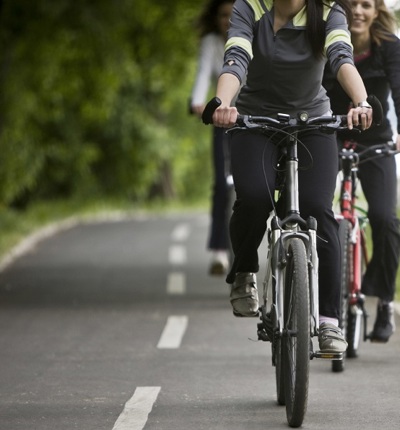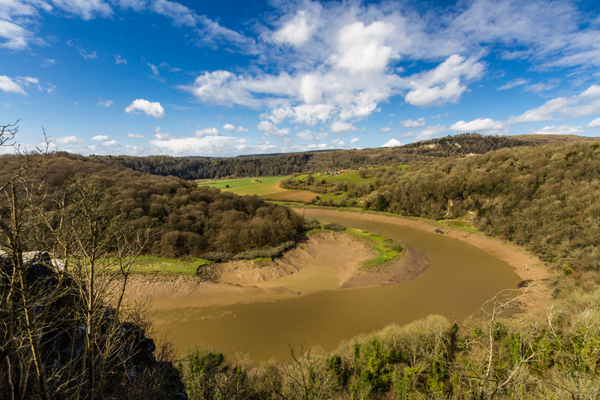
Did someone call for more Cycle Paths?
Robin Selley from our cycling team laments the once great cycling infrastructure of Stevenage. How this was borne from post-war optimism but withered through complacency by modern-day town planners. Robin argues how we'd all be better off if we remembered how cycling infrastructure was once the future in our towns and cities.
Posted on 21 July 2020
Stevenage is famed for its cycle paths and infrastructure built around the vision of Eric Claxton the engineer for the planning of the new town from 1946, and its Chief engineer between 1963 and 1972.
Eric was inspired in the immediate aftermath of the Second World War to respond to the words of Lloyd George who, as Prime Minister in 1918 after the first world war, had called on all “…to make Britain a fit country for heroes to live in.”.
As Claxton said in an interview in 1986:
“Well, I’d lived through the bit after that. I wasn’t enamoured of the land that we were made to live in, and I reckoned that perhaps this new town project was really the first decision to honour that state of affairs. So it put me very much on my mettle to try and create a very safe and convenient, and comfortable town for people to live in.”
Stevenage New Town was therefore designed from the outset with a substantial cycleway network on which people could cycle almost all the way around the town on segregated cycle paths, almost uninterrupted by other traffic and in safety for the benefit of all, a utopian vision of active transport.
Underpasses were designed wherever possible so motor traffic would climb two metres; cyclists would drop one metre. This provided adequate clearance to get cyclists under the flow of motor traffic without the ramps to the underpasses being too steep.
As Carlton Reid wrote in his blog from February 2013:
“Wide, smooth cycleways adjacent to main roads but separated from cars and pedestrians. Perpetually-lit, airy, safe underpasses beneath roundabouts. Direct, convenient and attractive cycle routes designed not by car-centric town planners but by a transport engineer who cycled to work every day. Schools, workplaces, shops: all linked by protected cycleways. Recreational bike paths to nature areas. Colour-coded sign-posting. Plentiful cycle parking in the town centre, at workplaces and at the rail station. An urban cycle network lionised at global conferences and the subject of lectures, books and study tours. Amsterdam? Copenhagen? Groningen? No. Stevenage in the 1970s”.
Stevenage has over 45 km of cycleways making it one of the best towns in the UK for travelling by bicycle. Despite all of this infrastructure, in more recent years planners in the town seem to have forgotten Eric Claxton’s visions, inspired from great sacrifice and built on hope for the future.
The cycle paths are now, in the main part, poorly surfaced, often covered in glass and debris making them dangerous for cyclists. Instead of being well ahead of the curve during the recent resurgence in cycling following the COVID-19 pandemic, planners in Stevenage appear to have become complacent.
The Town Centre area is due for redevelopment, with the pedestrianised shopping area, train and bus stations that are full of car parking space, but you will struggle to find anywhere safe and secure to leave your bicycle if you wanted to use the cyclepaths to make simple journeys around the town.
The new development in the town centre seems to promote extra car parking space as a good thing, but it remains silent on active travel, when this should be at the forefront of its engagement with local people. Some of the new office space will in fact have bicycle storage and showers but this does not appear as part of the marketing for this major development.
British Cycling’s #ChooseCycling Network – a collection of big British businesses including GSK, The AA, Sky, Virgin Trains and National Grid, representing over 250,000 employees – previously called on Government to put meaningful investment into cycling in order to boost productivity by creating a healthier workforce. These calls were made some years ago, but it is only now that the Government seems to be acting on this.
Isn’t ‘better health, less pollution and less congestion’ better for everyone? Physical inactivity costs the country as much as £47 billion a year, as Chris Boardman, MBE, the British former racing cyclist who is now more famous for his campaign work to get people more active, said:
“The appalling level of physical inactivity in this country is hurting us all; businesses face falling productivity as absences rise. Businesses want their staff and customers to live in towns and cities that are more pleasant, more liveable, less congested, less polluted, healthier, happier and more prosperous. This is only possible if more people are able to travel more easily by bicycle. Examples of sustained investment in cycling infrastructure paying rich dividends can be seen across Europe, and we recently invited members of the government to come with us to view one of the finest infrastructure models – Copenhagen. It is vital that those people making important decisions on our behalf are fully aware of what can be achieved – we can only hope that they choose to listen to the demand for crucial investment in cycling before it’s too late for this and future generations.”
Chris is actively promoting the Bee Network for Greater Manchester, where he aims to have 1,800 miles of cycle and walking infrastructure built across the city, to aid and promote more active travel. Stevenage really could be the Copenhagen or Amsterdam of the UK in cycling terms and it should be, given that the cycle network is already there.
But that is just the starting point. There must be a real desire to encourage people to cycle, at schools, from the Council, employers in the town, all working together to change the mentality of thousands as well as provide support to people who want to use a bike as their main form of transport.
Why stop with Stevenage, how many more towns and cities can and should have an equivalent infrastructure for active travel? Everyone in the country would benefit from more space being given over to cycling and walking. Society benefits and to those who have to use a car, congestion would be massively reduced, as would pollution and costs to the NHS from inactivity.
We need more and cleverer infrastructure, Eric Claxton’s vision was right, we must realise again that active travel is the only sustainable form of travel. Throughout July we have been collaboratively cycling to show our support for the Bee Network infrastructure project planned for Manchester, and which we hope will be replicated in many other towns and cities across the UK. See our progress on Strava and there's still time to add to the total.
#choosecycling
Why Cycle?
There are a multitude of reasons why people should cycle more, here are just a handful of them;
-
Medical experts describe cycling as “an ideal form of exercise”
-
Cycling for half an hour a day could halve your chances of heart disease
-
It is estimated that a 10% increase in people cycling regularly would reduce National Health Service costs for treating heart disease by £200m a year
-
Regular cyclists enjoy a fitness level normally found in someone 10 years younger
-
Cycling can perform a vital role in beating congestion
-
Cycling is good for not only your physical health, but your mental health too
-
Cycling is a pollution-free form of transport.
-
Nearly 60% of car journeys are less than 5 miles - by cycling instead for short journeys, you can help to reduce pollution and traffic congestion

